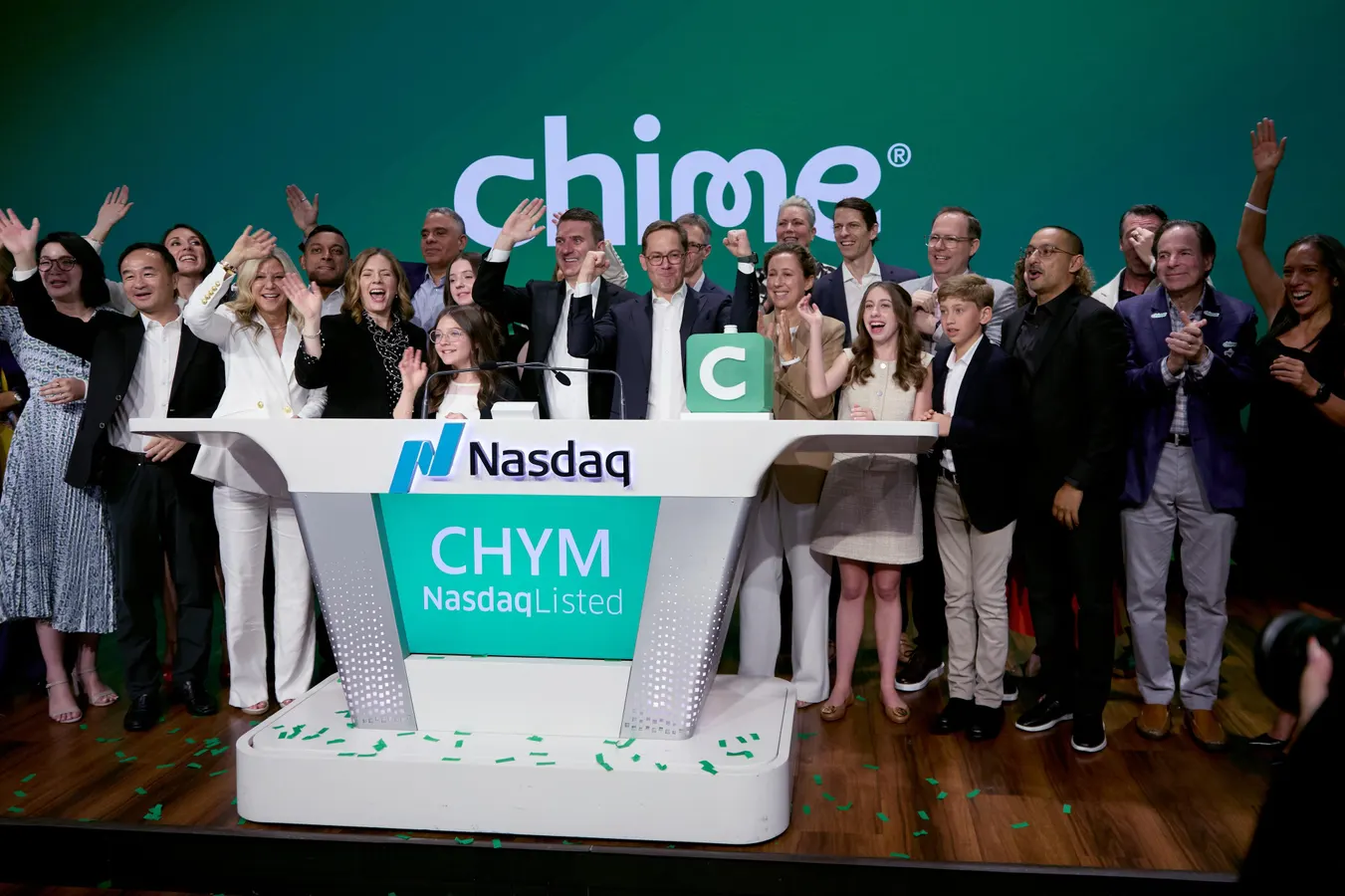By Andres Kudacki Contributor Trefis Team
NEW YORK, NEW YORK – JUNE 12: CEO of Chime, Chris Britt, center, celebrates with his team during the … More company’s initial public offering at the Nasdaq MarketSite on June 12, 2025 in New York City. Chime offers on-line banking and digital financial services. (Photo by Andres Kudacki/Getty Images)
Getty Images
The fintech firm Chime Financial (NASDAQ: CHYM) made its market debut just under a month ago. Although the stock skyrocketed nearly 40% above its IPO price of $27 to commence trading at $43, it has experienced a significant correction since then, currently trading at approximately $32 as of Tuesday. What has led to this sell-off, and what does the future hold for Chime stock?
The threat seems to stem from stablecoins, which could pose a direct challenge to Chime鈥檚 main business model. The Senate approved the stablecoin bill late last month, establishing a regulatory framework for these digital currencies that are pegged to the U.S. dollar or other fiat currencies. This initiative is anticipated to help legitimize this cryptocurrency format, enhancing competition for both traditional and digital-first financial service providers. These digital tokens allow consumers to make payments directly to merchants from their cryptocurrency wallets, bypassing traditional banking or card networks. There鈥檚 a compelling incentive for merchants to adopt these currencies, as they provide lower fees and quicker settlements. Chime, as a digital-first banking entity operating without physical branches, may find itself at a certain level of vulnerability.
Chime focuses on providing affordable financial services through elegant, mobile-first interfaces. This method has appealed to younger users and underserved demographics, especially those discouraged by the fees and requirements of traditional banks. However, these customers are generally more price-sensitive and tech-savvy. This increases their likelihood of embracing stablecoins if they offer even more convenience or savings. Moreover, Chime primarily generates its income through interchange fees鈥攕mall charges that merchants incur when a customer uses a Chime card. Nonetheless, these fees could come under pressure if stablecoin wallets allow for peer-to-peer and peer-to-merchant payments that avoid card networks entirely.
Chime Well Positioned To Adapt?
Is the stablecoin a fundamental threat to Chime? We believe not. Retailers have historically attempted to move away from credit cards with limited success. For example, pay-by-bank solutions, which enable customers to pay merchants directly from their bank accounts, have struggled to gain popularity in the U.S., even though they provide cost advantages. Stablecoins might encounter similar obstacles. Cards continue to be the choice for most consumers. They are pervasive, simple to use, integrate with the current banking infrastructure, and their usage has become second nature for many consumers.
Chime possesses some flexibility in this regard. It isn鈥檛 heavily reliant on traditional core banking systems鈥攊t depends on partner banks for its backend functions. This lightweight structure offers Chime greater adaptability to modify its approach. If stablecoins achieve widespread acceptance, Chime could pivot from card-based transactions and develop its own stablecoin-driven solutions, leveraging its strong brand and large, engaged customer base.
MORE FOR YOU
Chime鈥檚 core business has actually been on the rise. Revenue increased by over 30% in 2024 and grew by 32% in Q1 2025. The company鈥檚 profit trajectory is also showing improvement. While net losses totaled $25 million last year, they narrowed compared to 2023. Chime was profitable in the first quarter of 2025. This turnaround suggests that the substantial investments Chime has been making in marketing and brand development are beginning to yield returns.
For context, Chime invested over $500 million in marketing in 2024 alone. From a valuation standpoint, Chime鈥檚 current price of around $32 implies a market capitalization of about $11 billion, equating to a trading metric of approximately 6x trailing revenues鈥攚hich is not particularly inexpensive. That said, the company鈥檚 comparatively rapid growth and improving margins validate this to some extent.
Investing in a single stock such as CHYM can carry risks. However, the Trefis High Quality (HQ) Portfolio, which consists of 30 stocks, has regularly surpassed the S&P 500 comfortably over the last four years. What鈥檚 the reason for that? Overall, HQ Portfolio stocks have delivered higher returns with a lower risk profile compared to the benchmark index, yielding a smoother investing experience, as illustrated by HQ Portfolio performance metrics.
Editorial StandardsReprints & Permissions
